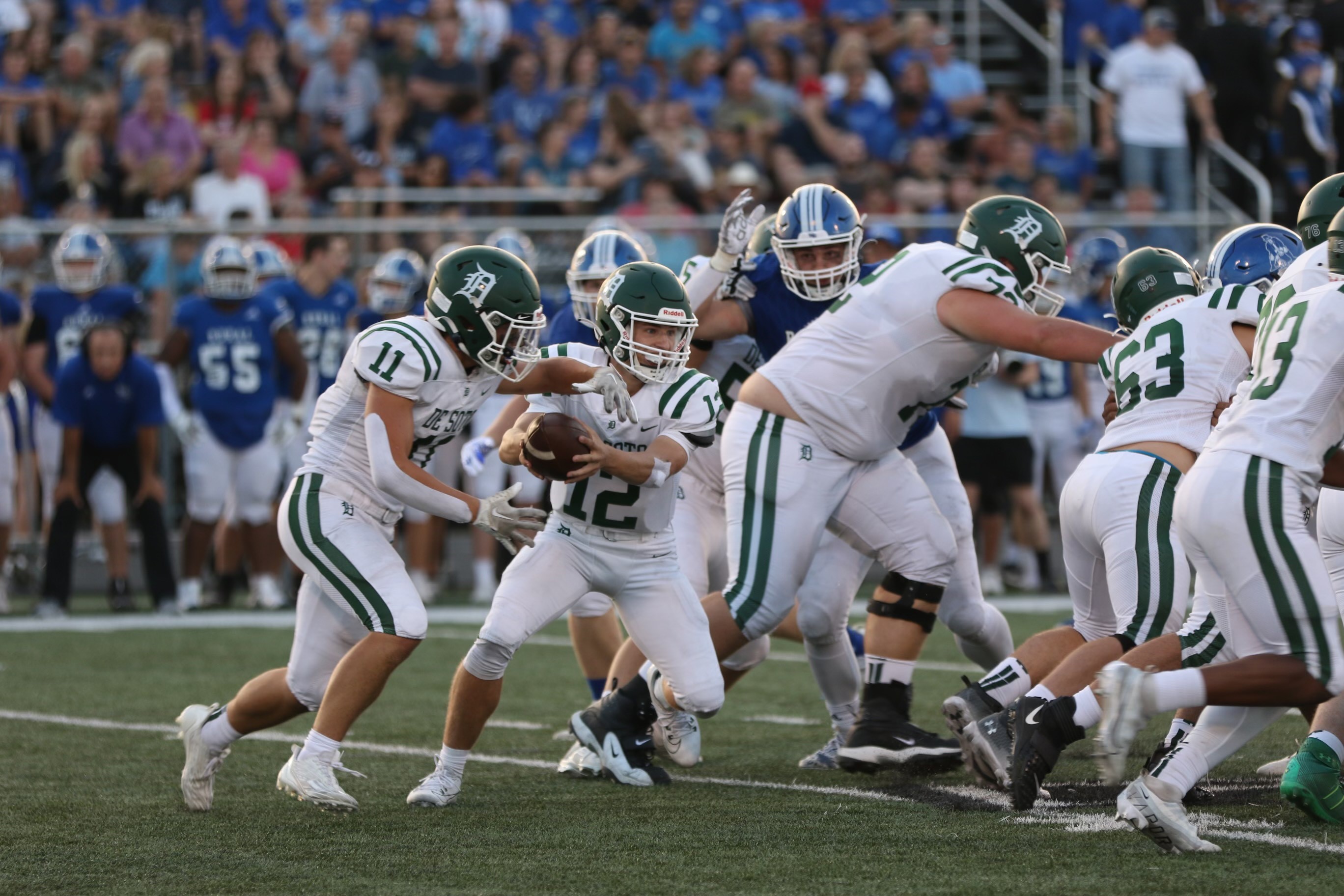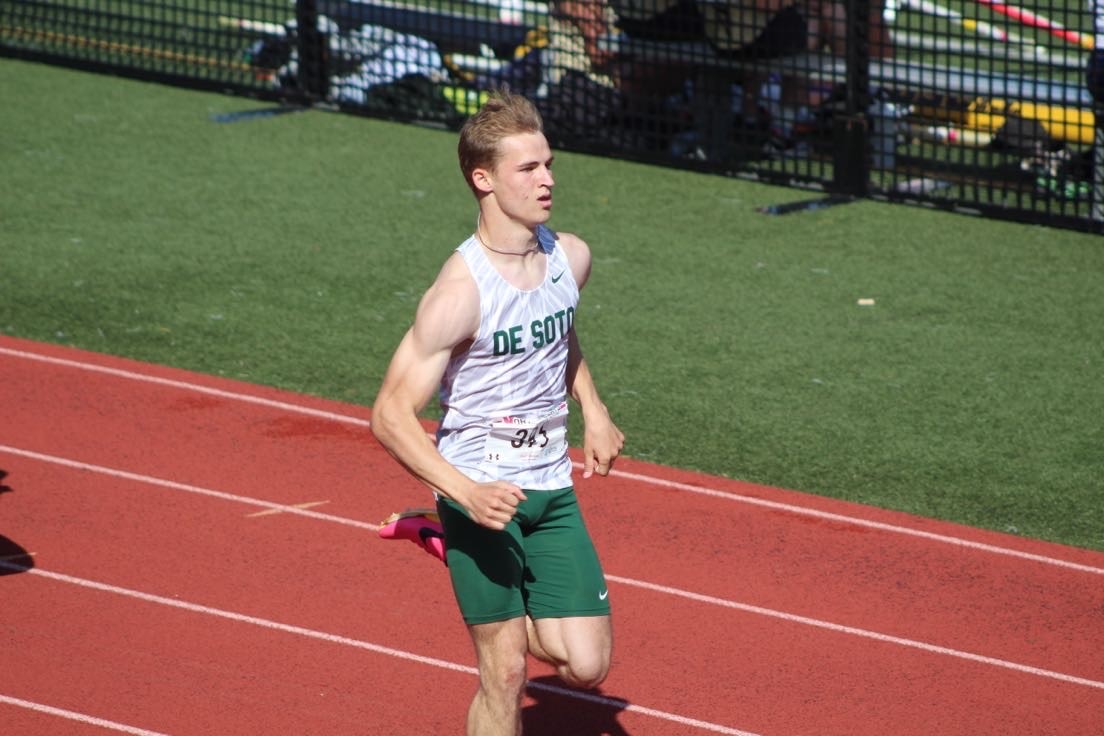August 22, 2024
Carson Miller is accustomed to speed. As a sprinter, he has mastered going extremely fast for short distances. But when he had 2 significant injuries in the same year, he learned the importance of patience and perseverance.
Carson, a DeSoto High School graduate, is headed to the University of Tulsa to run track. His events are the 100- and 200-meter relays, and his biggest accomplishment was taking the 5A state title in the 4x100-meter relay in 2024. But his journey to finish on top had several challenges along the way.
He was really understanding of the fact that I was an athlete, and I wanted to get back for the end of track season." Carson Miller
Stressed out
Carson was training for his junior season of high school track when he started to notice discomfort in the top of his foot. The pain became unbearable after running the first meet of his junior year. Kara Steen, a health system athletic trainer at DeSoto High school, recommended Carson get it checked out.
He met with orthopedic surgeon Bryan Vopat, MD, and was diagnosed with a navicular stress fracture and low vitamin D. While Carson’s stress fracture was mostly due to overuse, Dr. Vopat says a lack of nutrients can lead to a higher likelihood of stress fractures for youth athletes.
The good news for Carson was that his stress fracture didn’t require a surgery. The bad news? It would take time and rest.
“The navicular bone has a really poor blood supply, so it’s much harder to get that bone to heal,” Dr. Vopat says.
“He was really understanding of the fact that I was an athlete,” Carson says. “And I wanted to get back for the end of track season.”
“He had state track, so we tried to move him quicker,” Dr. Vopat remembers.
After some time in a walking boot, and working with a physical therapist at KU MedWest, Carson met his ambitious goal of competing at the state track meet. Unfortunately, he experienced a minor reinjury. But he knew the protocol and spent the summer doing very light training and physical therapy.
When fall sports rolled around, Carson felt ready to lead the DeSoto football team as its quarterback. They had a strong team with high hopes for his senior season.

Another setback
Carson’s hopes came crashing down during week 7 of the football season.
He planted his foot in a noncontact situation and went to the ground, knowing everything was wrong.
“I couldn’t straighten my leg,” Carson recalls. “My first thought was: I just lost my football season. We were going to make a run for state. This was finally our year. But the next thoughts were: wow, I might miss my track season, too. This might be another year of recruiting gone. It was a scary feeling.”
Historically the way that this was treated was that this portion was just removed. But we’ve evolved in our ability to repair them." Paul Schroeppel, MD
Orthopedic surgeon
He went to the orthopedic walk-in care at I-435 and Nall on Saturday morning and was ultimately diagnosed with a bucket handle tear of his meniscus.
Orthopedic surgeon Paul Schroeppel, MD, had 2 treatment options to offer Carson. One surgery would repair the tear while another would remove part of the meniscus.
“Bucket handle tears almost always require surgical management. It’s not something you can participate in athletics with,” says Dr. Schroeppel. “Historically the way that this was treated was that this portion was just removed. But we’ve evolved in our ability to repair them.”
The upside to meniscus removal is that recovery is faster. However, there’s a very good chance of developing arthritis after removal, even at a young age. Carson opted to go with the repair.
“The type of repair we did is called an inside-out bucket handle repair. It allows us to put a different type of suture in the meniscus, and we can generally do quite a few more stitches for a more robust repair,” says Dr. Schroeppel. “The challenge is when we repair, we have to be much more protective. The rehab following repair is significantly longer.”
That meant Carson was on crutches for about a month and had to wait 3 months before starting any plyometrics. He went back to working with a physical therapist at the health system and was monitored by Steen at DeSoto.
“I have been in that training office more times than I should’ve been. Especially throughout those 2 major injuries and all the minor ones, she was always there for me. Any time I had a question, she was always able to give me any assistance I needed. She was a fantastic resource to have,” Carson says.
Time was ticking down to his senior track season, but Carson had learned that patience pays off.
“He was very detail oriented and very compliant,” says Dr. Schroeppel. “We didn’t have any setbacks, and that was a credit to him.”
In the second week of March, about 20 weeks after his surgery, Carson was cleared from PT to go back to competing in track.
It was an incredible place to be. Everyone there cared about you and your well-being. They wanted to get you back to full speed and back to being an athlete." Carson Miller
“It brought a lot of emotions,” Carson says of running his first race back. “It was like, I’m still going to be able to perform. I’m still fast enough. I’m still here.”
He went on to have a remarkable season. Carson’s 4x100 relay team set a school record. He won the 200-meter race at the Shawnee Mission North relays. And finally, his 4x100 meter relay team secured the 5A state title.
Carson will be taking many lessons with him as he continues to compete at the University of Tulsa.
“The first thing and the biggest thing, you have to give yourself time to rest,” he says. “You can’t let these injuries get you down. Once you get past it, you can be right back where you were or better if you put in the effort and the time.”
While no one is glad to have been injured, Carson says his experience at the health system was exceptional. And if anyone knows the full scope of that – he does. Over the course of a few years Carson interacted with health system staff at his high school, in urgent care, at the walk-in clinic, through sports medicine and at physical therapy.
“It was an incredible place to be. Everyone there cared about you and your well-being. They wanted to get you back to full speed and back to being an athlete,” Carson says.






